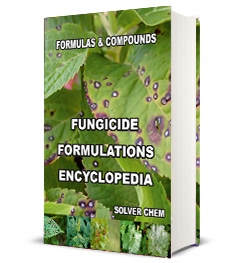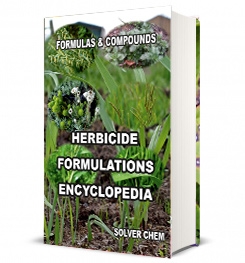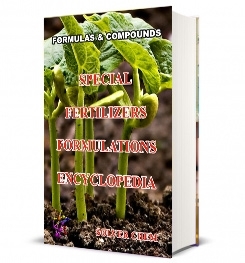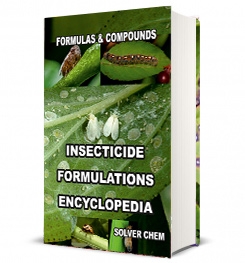Plant diseases are best managed by integrating a number of control practices that may include: crop rotation, selection of disease-tolerant or disease-resistant crop cultivars (cultivars genetically less susceptible than other cultivars), time of planting, level of fertilization, micro-climate modification, sanitation, and application of fungicides. Fungicides are often a vital part of disease management as (a) they control many diseases satisfactorily, (b) cultural practices often do not provide adequate disease control, (c) resistant cultivars are not available or not accepted in the marketplace for many diseases, and (d) certain high value crops have an extremely low tolerance for disease symptoms.
In contrast with most human medicines, most fungicides need to be applied before disease occurs or at the first appearance of symptoms to be effective. Unlike with many diseases of humans and animals, applying fungicides cannot heal symptoms already present, even if the pathogen is killed. This is because plants grow and develop differently than animals. Fungicides typically only protect new uninfected growth from disease. Few fungicides are effective against pathogens after they have infected a plant. Those that do have “curative” properties, which means they are active against pathogens that have already infected the plant, have limited ability to do so, often only being active on a pathogen within a few days of infection.
Many fungicides have targeted activity that imparts high efficacy against specific pathogens, which means low potential for toxicity to humans and other organisms, but also results in a high risk of pathogens developing resistance to the fungicide. A resistant pathogen is less sensitive to the action of the fungicide, which results in the fungicide being less effective or even ineffective. Fungicides that are designed to target specific enzymes or proteins made by fungi do not damage plant tissue, thus they can penetrate and move inside leaves enabling curative properties and increasing the amount of plant tissue protected to more than just where fungicide was deposit when applied. Since the mode of action of these fungicides is so specific, small genetic changes in fungi can overcome the effectiveness of these fungicides and pathogen populations can become resistant to future applications. Disease management strategies that rely heavily upon curative application of fungicides often lead to more resistance problems due to (a) the large size of the pathogen population when the application is made from which resistant individuals are being selected and (b) the difficultly in eradicating a pathogen entirely from inside the plant. Fungicide resistance is covered in more detail in a separate section.
Growers often use disease forecasting systems or action thresholds, when these are available, to ensure fungicides are applied when needed and to avoid the expense and possible environmental impact of unnecessary applications. Forecasting systems have been developed for a number of diseases based on an understanding of the environmental conditions favorable for their development. Typically these are based on temperature and relative humidity or leaf wetness in the area where the crop is grown. Threshold-based fungicide programs involve routinely scouting the crop for symptoms, then applying fungicides when the amount of symptoms reaches a critical level beyond which the disease cannot be controlled adequately. An example of a critical level is one disease spot per five leaves examined. Knowledge of the disease cycle of the pathogen is important when developing and using forecasting systems and thresholds. Important aspects of the disease cycle include whether the disease is monocyclic (one generation per year) or polycyclic (multiple generations) and latent period (time between infection and production of new inoculum).
Economics often influence the choice of fungicide and application timing. Expensive fungicides and numerous applications are used on valuable plantings that might incur substantial economic loss in the absence of treatment, such as fruit trees and golf courses. Recognizing that with some diseases crop yield is not impacted when severity is low, an economic threshold is used to determine when fungicide treatment is needed. The crop tolerance level, or damage threshold, can vary depending upon the stage of the crop development when attacked, crop management practices, location and climatic conditions.
 FUNGICIDE FORMULATIONS ENCYCLOPEDIA has many formulations and applications of fungicide. All studies in this encyclopedia are weight to weight. Some of the studies in the FUNGICIDE FORMULATIONS ENCYCLOPEDIA are summarized below.
FUNGICIDE FORMULATIONS ENCYCLOPEDIA has many formulations and applications of fungicide. All studies in this encyclopedia are weight to weight. Some of the studies in the FUNGICIDE FORMULATIONS ENCYCLOPEDIA are summarized below.* Wettable powder ( WP ) fungicide formulations and manufacturing line & applications
* Wettable granules ( WG ) fungicide formulations and manufacturing process & applications.
* Soluable concentrate ( Liquid ) ( SL ) fungicide formulations and production process and applications.
* Suspension Concentrate ( SC ) fungicide formulations and manufacturing process and applications.
RELATED TAGS: Fungicide book, fungicide application book, fungicide formulations pdf book, fungicide hard book, fungicide formulation pdf book, fungicide encyclopedia, fungicide formulations, fungicide manufacturing process, fungicide production, fungicide making book, fungicide prodcution book, emulsifiable concentrate ( EC ) fungicide formulations book, fungicide soluable concentrate ( SL ) formulations and productions books, suspension concentrate ( SC ) fungicide book, wettable powder ( WP ) fungicides formulations e book, wettable granules ( WG ) fungicide formulations PDF books.
RELATED E BOOKS






CHEMICAL FERTILIZER FORMULATIONS ENCYCLOPEDIA

|
|

|
|

|
|
